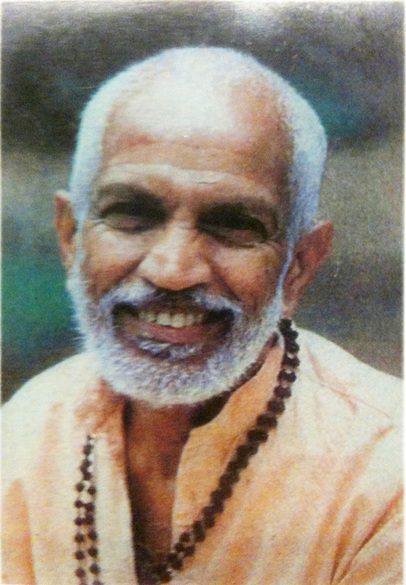This month, the Jivamukti Yoga community brought focus to the practice of Mauna, silence. My personal understanding of silence has greatly evolved over the past month from a simplistic one to a more complex and experiential one.
Let me begin by saying that silence (in relation to Mauna) is not the absence of sound; it is the state of inner quietude (a thoughtless silence) that results in total absence of speech and noise pollution. What a lofty goal! to totally abstain from speaking. Of what benefit are we when we are silent? What about ‘speaking up’ for what we believe in? What about forming or maintaining relationships with others through verbal communication? What about using our voice for the greater good?
All of these questions immediately flood the mind and create a skeptical tone of thought. These questions undoubtedly arise because of our very natural, culturally created understanding of what it means to communicate: how we communicate, through what mediums we best communicate, and a general underestimation of the power of our presence alone. The practice of Mauna is not to disregard the importance of our physical voice, but instead gives rise to a myriad of questions around how, when and why we use the physical voice.
You see, to limit our powers of communication to mere words is yet another way we humans limit our boundless potential for connecting with others and the world around us. Our body language alone speaks volumes about how we are feeling and how we are (consciously or unconsciously) choosing to relate to the world at any given moment. Quietude really begins in the mind, as thoughts are the seeds of our words. We have been taught that thinking is intelligence – and that this ‘intelligence’ should be streamed out into the world for recognition – when actually, spaciousness and silence are the marks of true intelligence.
Let me explain through the example of yoga asana, the physical practice.
Asana itself is a silent language. Our bodies communicate through asana their unique language of movement and posture. Asana is, however, a divine language—a holy language – by which movement is an intentional, spiritually charged collection of mudras (energetic signatures). Asana, when practiced with sincerity over time, cultivates and refines the language of the body so that it may communicate beautifully and openly with the world. The simple act of drawing the shoulders away from the ears and lifting the heart while standing communicates a sense of openness and confidence. These simple alignments alone can begin to unravel a lifetime (or lifetimes) worth of closing ourselves off to the world. In short, asana practice is a radical one of disciplining the body’s art of communication with the inner and outer worlds. It is bringing intelligence and familiarity to the body through intentional action. We can only understand the world as much as we understand ourselves, after all.
However, in just a few weeks of exploring Mauna, one thing became abundantly clear to me: the asanas have a really powerful way of stirring up ‘noise’ (thoughts) in our minds. If, for example, we are thinking of falling over in headstand (which is natural and common), the body seizes in fear and communicates that fear. If, on the other hand, we are experiencing a strong desire or attachment to coming into headstand, we risk toppling over in our urgency. Neither of these thought forms proves helpful to us; they are based in imagination or past experience. Therefore, the asana requires that the mind is quiet, clear and present. Only then is the asana being performed with what Geeta Iyengar named Bhavana, or ‘the thought that God is within.’ A silent mind reflects Godliness.
So, what does this have to do with silence in our daily lives? Everyday we face situations, both internal and external, that challenge us like the headstand. Everyday, these experiences stir up internal ‘noise,’ and we are presented with the opportunity to meet them with presence or unconscious reactions. We are presented with the choice to either listen to our whirling thoughts, or to allow there to be space. Hopefully when we meet those really challenging experiences face to face we will have some practice in creating space to act and/or speak with intelligence. Otherwise, we are caught riding a merry-go-round of our fears and desires. In some cases, we may even find that those challenges that once made us loud out of anger, pride or fear are now being met with total silence.
Abstaining from speech does not require that we shut off from the world. In fact, quite the opposite seems to be true. When we cultivate quietude and spaciousness in our minds through practices like asana, we experience just how rich and fertile silence really is. As acoustic ecologist Gordon Hempton notes, “Silence is presence,” and how often do we cut into that pure, intelligent presence with words that dissect, or worse, misconstrue our true intentions?
I guess what I am trying to get at is that words have a way of breaking up or muddling what we are really trying to communicate; but the body, our presence, cannot. Other more primal forms of language and communication (like that of the body) are perhaps more transparent and truthful than our words could ever hope to be.
So the next time there is a moment of silence between you and another, instead of rushing to fill it with words, explore these questions: what is present in this silence? What is here with us? Between us? Within me? What is my energy – my presence – communicating to this being right now? How are the inner and outer worlds of my experience intermingling?
Some say the art of conversation is lost and I would tend to agree. Rather than listening, we tend more to speak; rather than really hearing, we tend more to personalize. The true art of conversation is not in the speaking but in the spaces between words in which we are listening and hearing.
Maybe we won’t all advance our practice of Mauna to a total absence of speech. I, myself, am not ready for that. At 24 years old, I am bursting with energy and ideas…I think I might explode if I coerced myself into total silence under some false pretence of spiritual practice. A spiritual practice never asks that you take away from yourself; you are already completely whole. Spiritual practice, instead, sensitizes you to fully experience all that you already are – which we might describe as pure, intelligent presence – and then everything else will naturally fall away. So maybe we can begin simply allowing for more silence in our daily lives: a reduction of the modern noise of phones, televisions, air conditioners, and political gossip in exchange for more quietude; less drawing of conclusions and harping on opinions in exchange for more openness and curiosity; less dividing the world up into what we see with our eyes and describe with our thoughts, in exchange for more listening, more tuning of the ears; more importantly, less thoughtless conversing (both with ourselves and others) in exchange for more presence.
Imagine a world that welcomes silence! We are the ones to create that. And it all begins with listening.
Love,
Jaylyn


